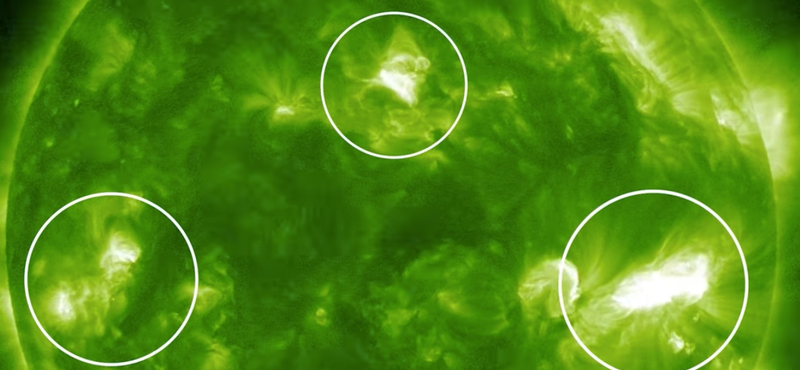[{“available”:true,”c_guid”:”71901783-b638-49f4-adcb-b5b4384e48a5″,”c_author”:”hvg.hu”,”category”:”itthon”,”description”:”A kegyelmi botránnyal és Magyar Péter megjelenésével felbolydult a közélet, ezzel együtt pedig a közvéleménykutatói szakma is.”,”shortLead”:”A kegyelmi botránnyal és Magyar Péter megjelenésével felbolydult a közélet, ezzel együtt pedig a közvéleménykutatói…”,”id”:”20240426_hann-endre-magyar-peter-kozvelemeny-kutatas”,”image”:”https://img.hvg.hu/Img/ffdb5e3a-e632-4abc-b367-3d9b3bb5573b/71901783-b638-49f4-adcb-b5b4384e48a5.jpg”,”index”:0,”item”:”54a7a803-eca1-4da6-ae75-3428c07d0f54″,”keywords”:null,”link”:”/itthon/20240426_hann-endre-magyar-peter-kozvelemeny-kutatas”,”timestamp”:”2024. április. 26. 15:56″,”title”:”Hann Endre tud olyan közvélemény-kutatásról is, amelyet a készítője nem, vagy csak később publikált”,”trackingCode”:”RELATED”,”c_isbrandchannel”:false,”c_isbrandcontent”:false,”c_isbrandstory”:false,”c_isbrandcontentorbrandstory”:false,”c_isbranded”:false,”c_ishvg360article”:false,”c_partnername”:null,”c_partnerlogo”:”00000000-0000-0000-0000-000000000000″,”c_partnertag”:null},{“available”:true,”c_guid”:”beb2b0f8-abf9-45b6-8e6c-d3953f7f39bf”,”c_author”:”hvg.hu”,”category”:”elet”,”description”:”Mégpedig azért, mert a magyar ember kíváncsi.”,”shortLead”:”Mégpedig azért, mert a magyar ember kíváncsi.”,”id”:”20240425_gaspar-gyozo-gyozike-show-ujraindul-tv2″,”image”:”https://img.hvg.hu/Img/ffdb5e3a-e632-4abc-b367-3d9b3bb5573b/beb2b0f8-abf9-45b6-8e6c-d3953f7f39bf.jpg”,”index”:0,”item”:”1c3fce5d-af90-4ca4-a0dc-d88998698d60″,”keywords”:null,”link”:”/elet/20240425_gaspar-gyozo-gyozike-show-ujraindul-tv2″,”timestamp”:”2024. április. 25. 15:04″,”title”:”Gáspár Győző szerint a Győzike Show folytatását „úgy fogják nézni, mint annak a rendje””,”trackingCode”:”RELATED”,”c_isbrandchannel”:false,”c_isbrandcontent”:false,”c_isbrandstory”:false,”c_isbrandcontentorbrandstory”:false,”c_isbranded”:false,”c_ishvg360article”:false,”c_partnername”:null,”c_partnerlogo”:”00000000-0000-0000-0000-000000000000″,”c_partnertag”:null},{“available”:true,”c_guid”:”80ced072-64f6-4cfb-b755-fd32950ae4e3″,”c_author”:”hvg.hu”,”category”:”elet”,”description”:”A közösségek jövőjéről is beszélgettek a köztársasági elnök vatikáni látogatásán.”,”shortLead”:”A közösségek jövőjéről is beszélgettek a köztársasági elnök vatikáni látogatásán.”,”id”:”20240425_sulyok-tamas-ferenc-papa-vatikan-latogatas”,”image”:”https://img.hvg.hu/Img/ffdb5e3a-e632-4abc-b367-3d9b3bb5573b/80ced072-64f6-4cfb-b755-fd32950ae4e3.jpg”,”index”:0,”item”:”5d67d901-8e4d-41ce-aac7-6708ff53fddb”,”keywords”:null,”link”:”/elet/20240425_sulyok-tamas-ferenc-papa-vatikan-latogatas”,”timestamp”:”2024. április. 25. 14:21″,”title”:”Sulyok Tamás elmesélte a matyó hímzés történetét Ferenc pápának”,”trackingCode”:”RELATED”,”c_isbrandchannel”:false,”c_isbrandcontent”:false,”c_isbrandstory”:false,”c_isbrandcontentorbrandstory”:false,”c_isbranded”:false,”c_ishvg360article”:false,”c_partnername”:null,”c_partnerlogo”:”00000000-0000-0000-0000-000000000000″,”c_partnertag”:null},{“available”:true,”c_guid”:”ae40232f-2d6d-4d00-9df7-d34623ed971c”,”c_author”:”hvg.hu”,”category”:”cegauto”,”description”:”Most gazdát keresnek a kutyusnak. “,”shortLead”:”Most gazdát keresnek a kutyusnak. “,”id”:”20240426_kiskutya-auto-motorter-romania-video-kolozsvar”,”image”:”https://img.hvg.hu/Img/ffdb5e3a-e632-4abc-b367-3d9b3bb5573b/ae40232f-2d6d-4d00-9df7-d34623ed971c.jpg”,”index”:0,”item”:”b25665e4-0c05-4b6b-8b0c-fcf4f37ba71f”,”keywords”:null,”link”:”/cegauto/20240426_kiskutya-auto-motorter-romania-video-kolozsvar”,”timestamp”:”2024. április. 26. 13:06″,”title”:”Száz kilométeren át utazott egy kocsi motorterében egy kiskutya”,”trackingCode”:”RELATED”,”c_isbrandchannel”:false,”c_isbrandcontent”:false,”c_isbrandstory”:false,”c_isbrandcontentorbrandstory”:false,”c_isbranded”:false,”c_ishvg360article”:false,”c_partnername”:null,”c_partnerlogo”:”00000000-0000-0000-0000-000000000000″,”c_partnertag”:null},{“available”:true,”c_guid”:”e9e04174-bbe0-4d6a-8857-e673d33cca22″,”c_author”:”hvg.hu”,”category”:”tudomany”,”description”:”Az ExoMars egy tökéletes példát hozott arra, hogy mi is az a pareidolia.”,”shortLead”:”Az ExoMars egy tökéletes példát hozott arra, hogy mi is az a pareidolia.”,”id”:”20240426_mars-felszine-europai-urugynokseg-szen-dioxid-olvadas-tavasz”,”image”:”https://img.hvg.hu/Img/ffdb5e3a-e632-4abc-b367-3d9b3bb5573b/e9e04174-bbe0-4d6a-8857-e673d33cca22.jpg”,”index”:0,”item”:”aacd2782-e449-4205-b231-f21de379eab2″,”keywords”:null,”link”:”/tudomany/20240426_mars-felszine-europai-urugynokseg-szen-dioxid-olvadas-tavasz”,”timestamp”:”2024. április. 26. 11:03″,”title”:”Óriási „pókokat” fotóztak a Marson”,”trackingCode”:”RELATED”,”c_isbrandchannel”:false,”c_isbrandcontent”:false,”c_isbrandstory”:false,”c_isbrandcontentorbrandstory”:false,”c_isbranded”:false,”c_ishvg360article”:false,”c_partnername”:null,”c_partnerlogo”:”00000000-0000-0000-0000-000000000000″,”c_partnertag”:null},{“available”:true,”c_guid”:”dfa456bd-2135-4379-a0a8-2cefe3fe3abd”,”c_author”:”hvg.hu”,”category”:”itthon”,”description”:”A Magyar Péter által nyilvánosságra hozott hangfelvétel nyomán Varga Judit után Gulyást is beidézték.”,”shortLead”:”A Magyar Péter által nyilvánosságra hozott hangfelvétel nyomán Varga Judit után Gulyást is beidézték.”,”id”:”20240425_gulyas-gergely-tanumeghallgatas-ugyeszseg-hangfelvetel”,”image”:”https://img.hvg.hu/Img/ffdb5e3a-e632-4abc-b367-3d9b3bb5573b/dfa456bd-2135-4379-a0a8-2cefe3fe3abd.jpg”,”index”:0,”item”:”26746272-ede7-4867-83d5-e89fc097b834″,”keywords”:null,”link”:”/itthon/20240425_gulyas-gergely-tanumeghallgatas-ugyeszseg-hangfelvetel”,”timestamp”:”2024. április. 25. 13:19″,”title”:”Gulyás Gergelyt is kihallgatta tanúként az ügyészség”,”trackingCode”:”RELATED”,”c_isbrandchannel”:false,”c_isbrandcontent”:false,”c_isbrandstory”:false,”c_isbrandcontentorbrandstory”:false,”c_isbranded”:false,”c_ishvg360article”:false,”c_partnername”:null,”c_partnerlogo”:”00000000-0000-0000-0000-000000000000″,”c_partnertag”:null},{“available”:true,”c_guid”:”c7c69006-018f-482e-a320-0e8380aa38ea”,”c_author”:”hvg.hu”,”category”:”itthon”,”description”:”Közös projektek, programok, szakértők cseréje – Hadházy bemutatta, mi van a magyar–kínai belügyi egyezményekben.”,”shortLead”:”Közös projektek, programok, szakértők cseréje – Hadházy bemutatta, mi van a magyar–kínai belügyi egyezményekben.”,”id”:”20240426_hadhazy-rendori-egyuttmokodes-kina”,”image”:”https://img.hvg.hu/Img/ffdb5e3a-e632-4abc-b367-3d9b3bb5573b/c7c69006-018f-482e-a320-0e8380aa38ea.jpg”,”index”:0,”item”:”044e9a23-3452-4f29-a0eb-9827c047e766″,”keywords”:null,”link”:”/itthon/20240426_hadhazy-rendori-egyuttmokodes-kina”,”timestamp”:”2024. április. 26. 08:00″,”title”:”Hadházy Ákos: A kínaiakkal kötött belügyi egyezmények alapján szó szerint mindent megtehet a kormány”,”trackingCode”:”RELATED”,”c_isbrandchannel”:false,”c_isbrandcontent”:false,”c_isbrandstory”:false,”c_isbrandcontentorbrandstory”:false,”c_isbranded”:false,”c_ishvg360article”:false,”c_partnername”:null,”c_partnerlogo”:”00000000-0000-0000-0000-000000000000″,”c_partnertag”:null},{“available”:true,”c_guid”:”5386af14-697e-4f76-b750-837b782479f7″,”c_author”:”hvg.hu”,”category”:”cegauto”,”description”:”A koncepció 180 fokban elforgatható hátsó ülésekkel és kivehető csomagtérajtóval rendelkezik.”,”shortLead”:”A koncepció 180 fokban elforgatható hátsó ülésekkel és kivehető csomagtérajtóval rendelkezik.”,”id”:”20240426_italdesign-quintessenza-concept”,”image”:”https://img.hvg.hu/Img/ffdb5e3a-e632-4abc-b367-3d9b3bb5573b/5386af14-697e-4f76-b750-837b782479f7.jpg”,”index”:0,”item”:”20fb2f6f-07ca-4930-a72a-7447a4086d7e”,”keywords”:null,”link”:”/cegauto/20240426_italdesign-quintessenza-concept”,”timestamp”:”2024. április. 26. 08:04″,”title”:”Ilyennek képzeli a jövő autóját az egyik legismertebb olasz dizájnstúdió”,”trackingCode”:”RELATED”,”c_isbrandchannel”:false,”c_isbrandcontent”:false,”c_isbrandstory”:false,”c_isbrandcontentorbrandstory”:false,”c_isbranded”:false,”c_ishvg360article”:false,”c_partnername”:null,”c_partnerlogo”:”00000000-0000-0000-0000-000000000000″,”c_partnertag”:null}]

We recommend it from the first page

Major developments in railways could come with Chinese subcontractors, Chinese technology and, of course, Chinese credit.
Conditions have been improved, so even in areas with higher incomes, you can get the highest non-refundable benefit if the claimant's income is low.
Earthquakes do not stop in the southern Italian countryside, which is located on a massive volcano.


The Tesla competitor promises a range of up to 1,000 kilometers.

Patients in Bomas, Tahitotvalu and Cox feel they are not getting what the government promised. Deutsche Welle report.












































